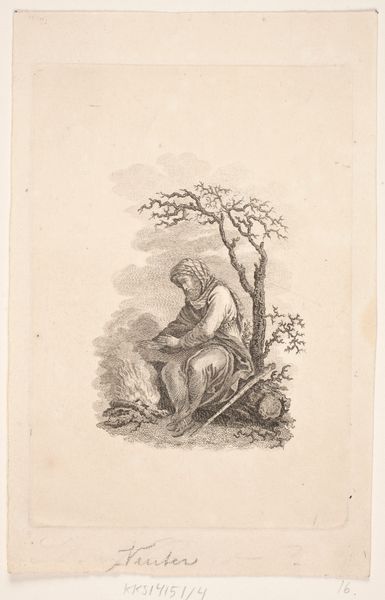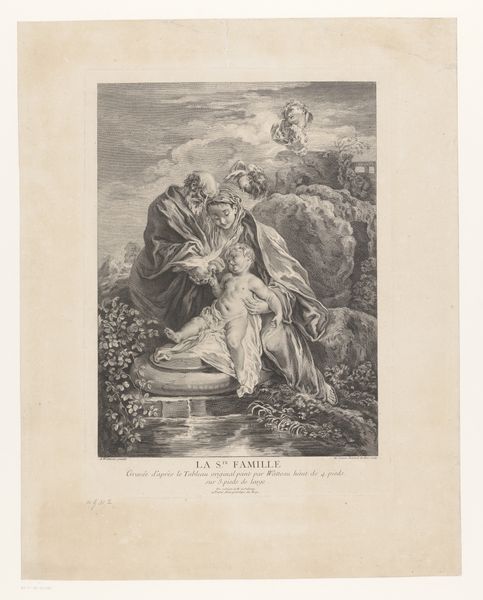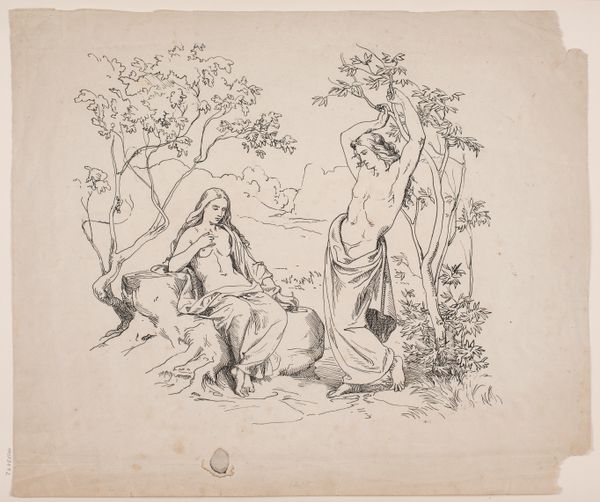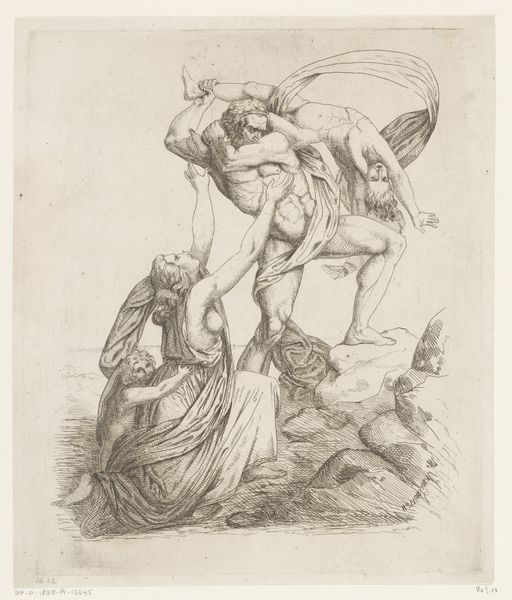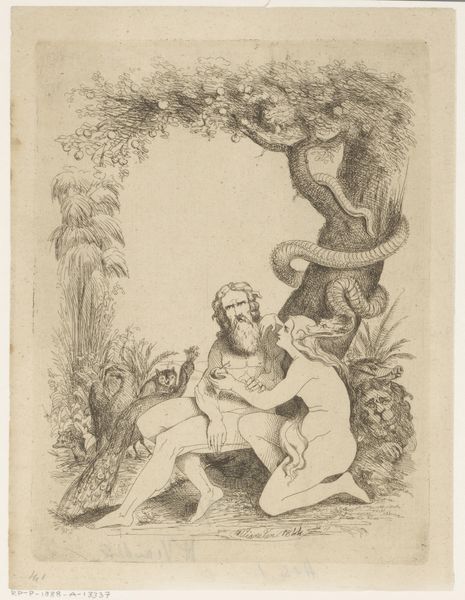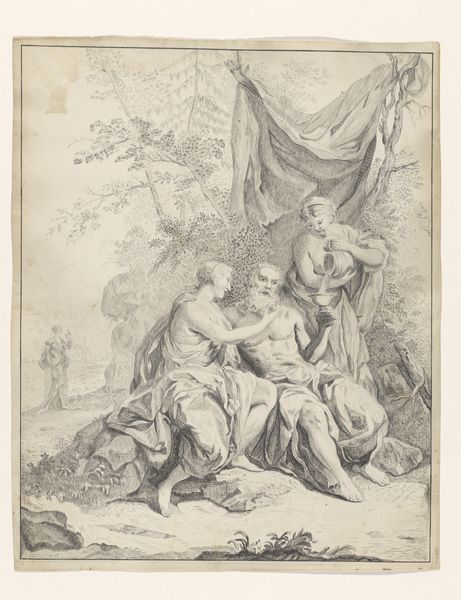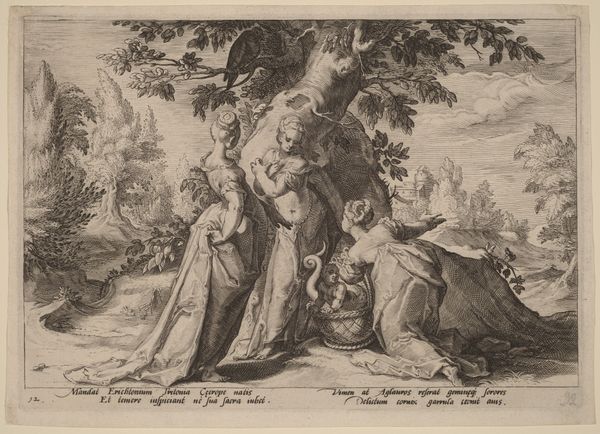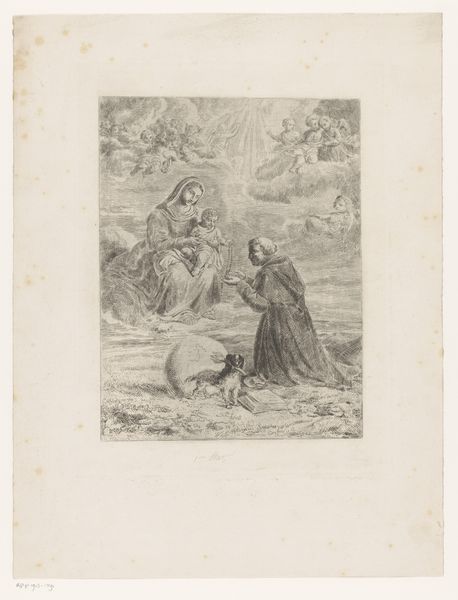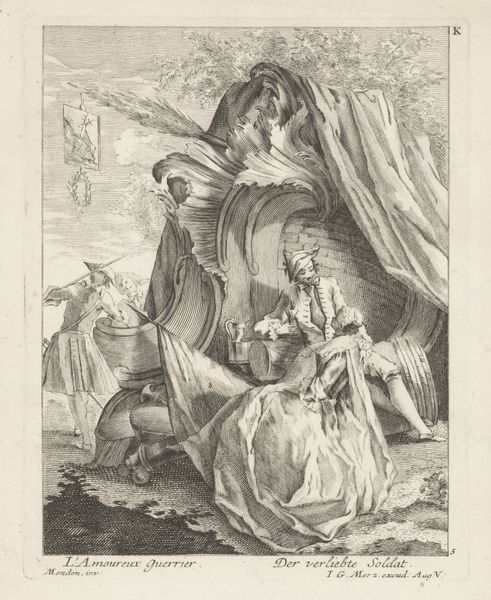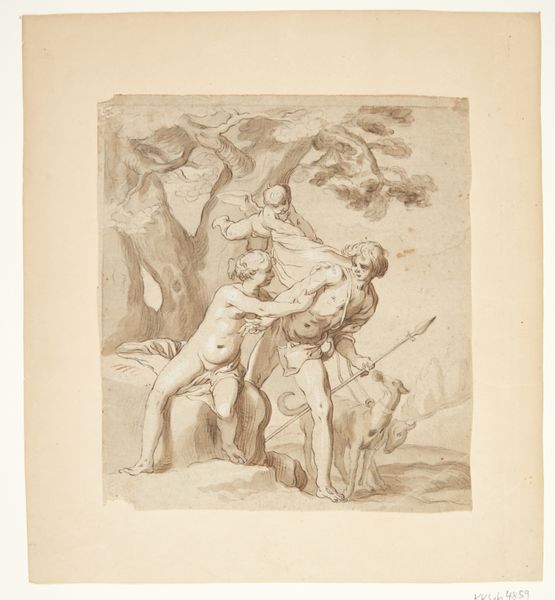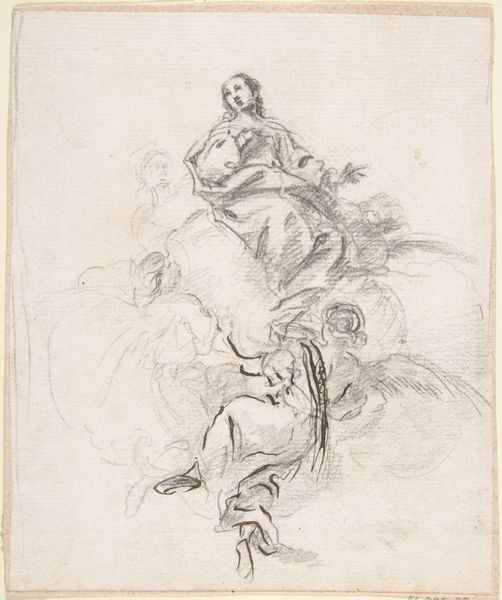
Dimensions: 193 mm (height) x 165 mm (width) (bladmaal)
Editor: "Harpen ved stranden," or "The Harp by the Beach," by Lorenz Frølich, sometime between 1820 and 1908. It’s a drawing, print, and woodcut in ink. The delicate lines create a dreamy and sensual landscape, don’t you think? What stands out to you, Professor? Curator: Indeed, the Romantic landscape immediately calls to mind the figure’s relation to nature. Note how the linear quality and open composition lead the eye through a series of interconnected forms. Consider how the texture and weight of each area affects the whole. For example, the intricate linework in the tree contrasts with the relatively bare expanse of water. Does this contrast produce a noticeable effect? Editor: I think so. The busy texture of the tree and the figure’s hair versus the smoothness of the water and skin focuses my attention on the top-left corner and then her. The harp almost disappears into the tree, actually. Is that significant? Curator: Precisely! Consider the materiality of the print and the visual elements at play. Observe how the woodcut’s medium itself lends a specific textural quality. The strategic placement of line and form draws the eye in and orchestrates movement across the surface. Could one even argue that the harp's visual merging with the tree suggests a symbiosis between music and nature? Editor: Absolutely. It’s not just a woman by a beach with a harp; it is, as you suggest, about their connection, reinforced through composition. Thanks, I am looking at this so differently now. Curator: My pleasure. Looking at art through its inherent structure and the artist's manipulation of form often reveals profound insights.
Comments
No comments
Be the first to comment and join the conversation on the ultimate creative platform.
